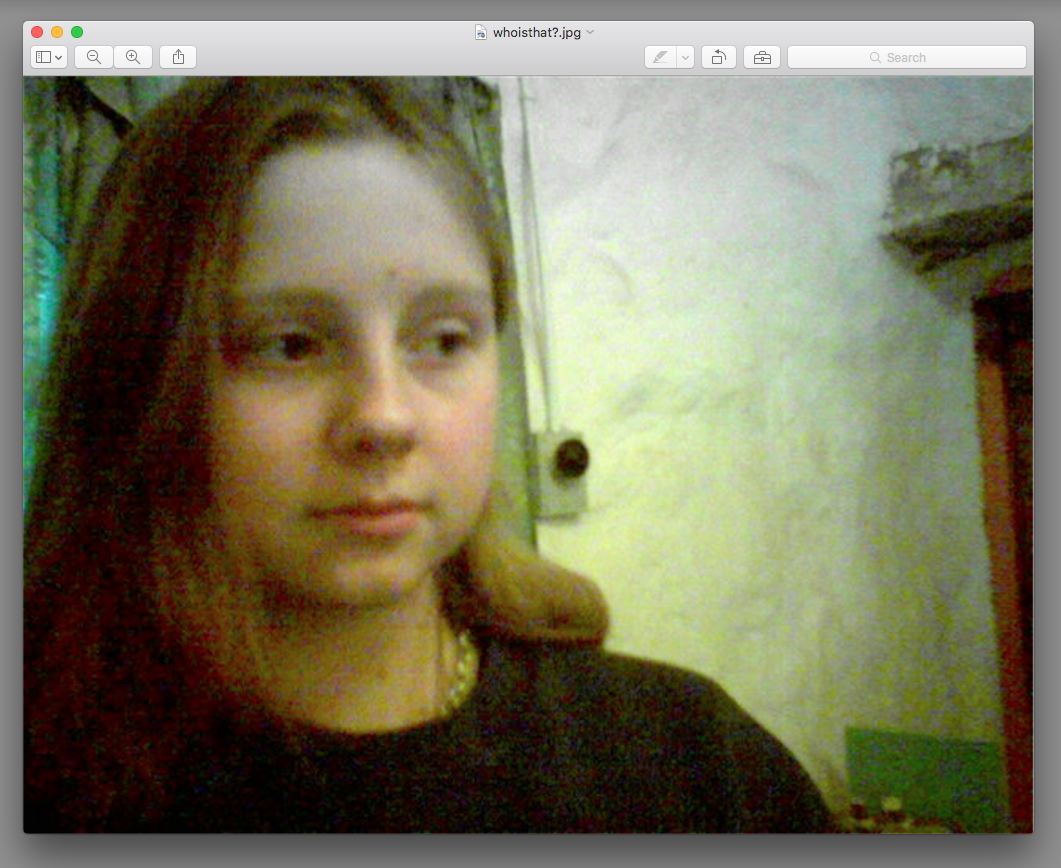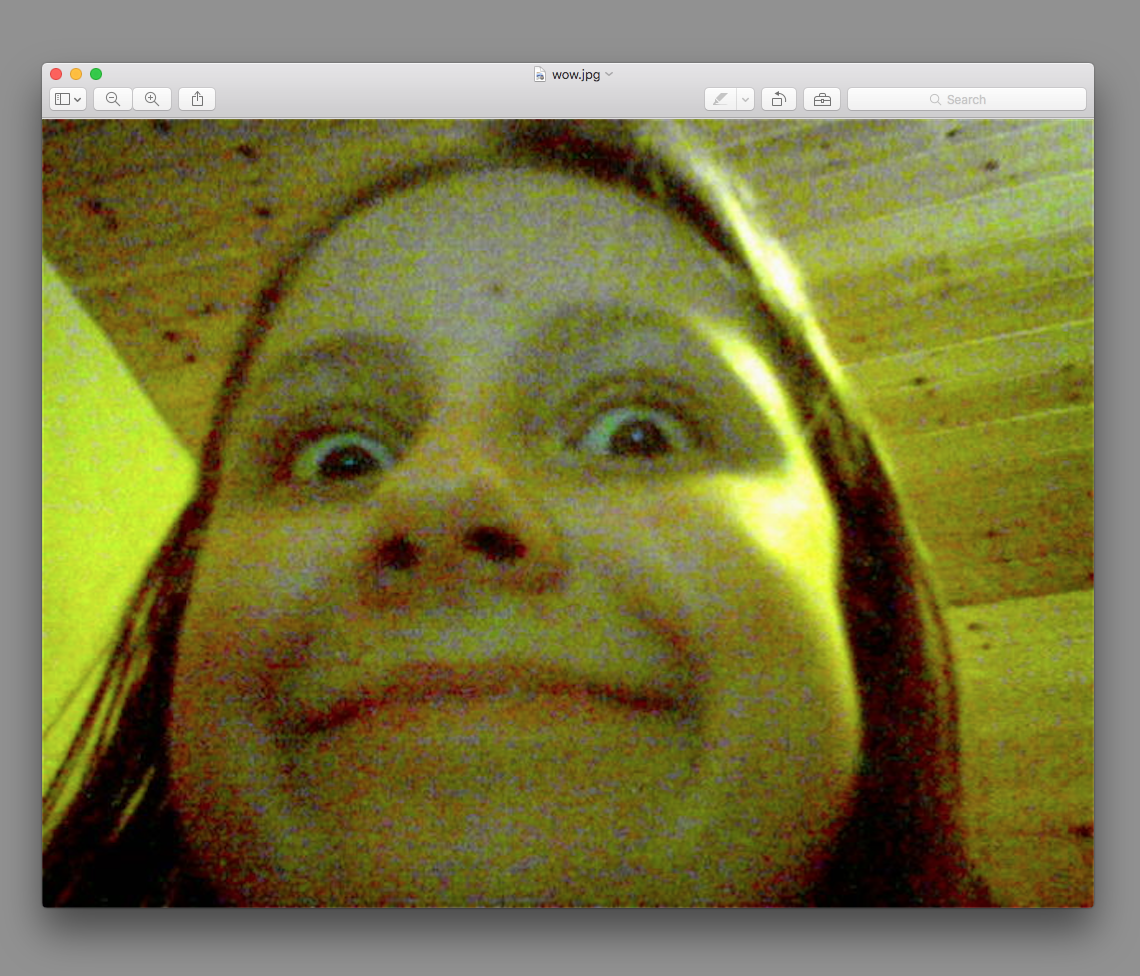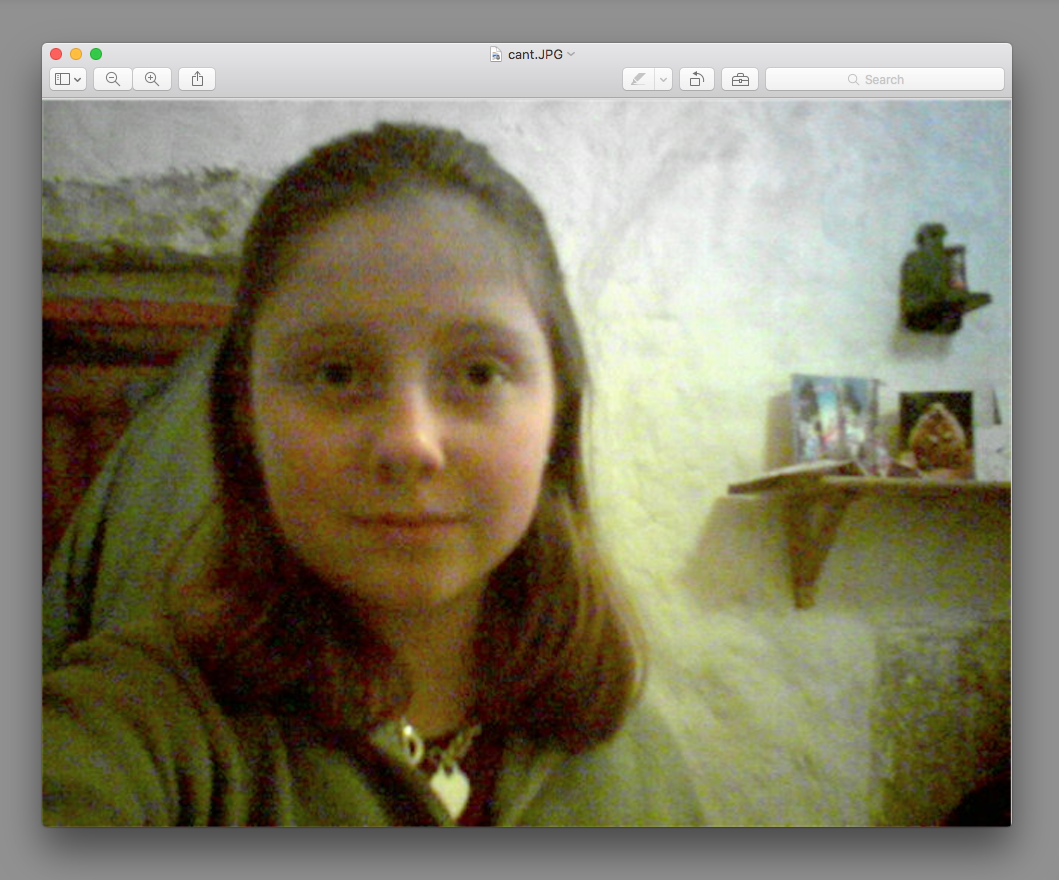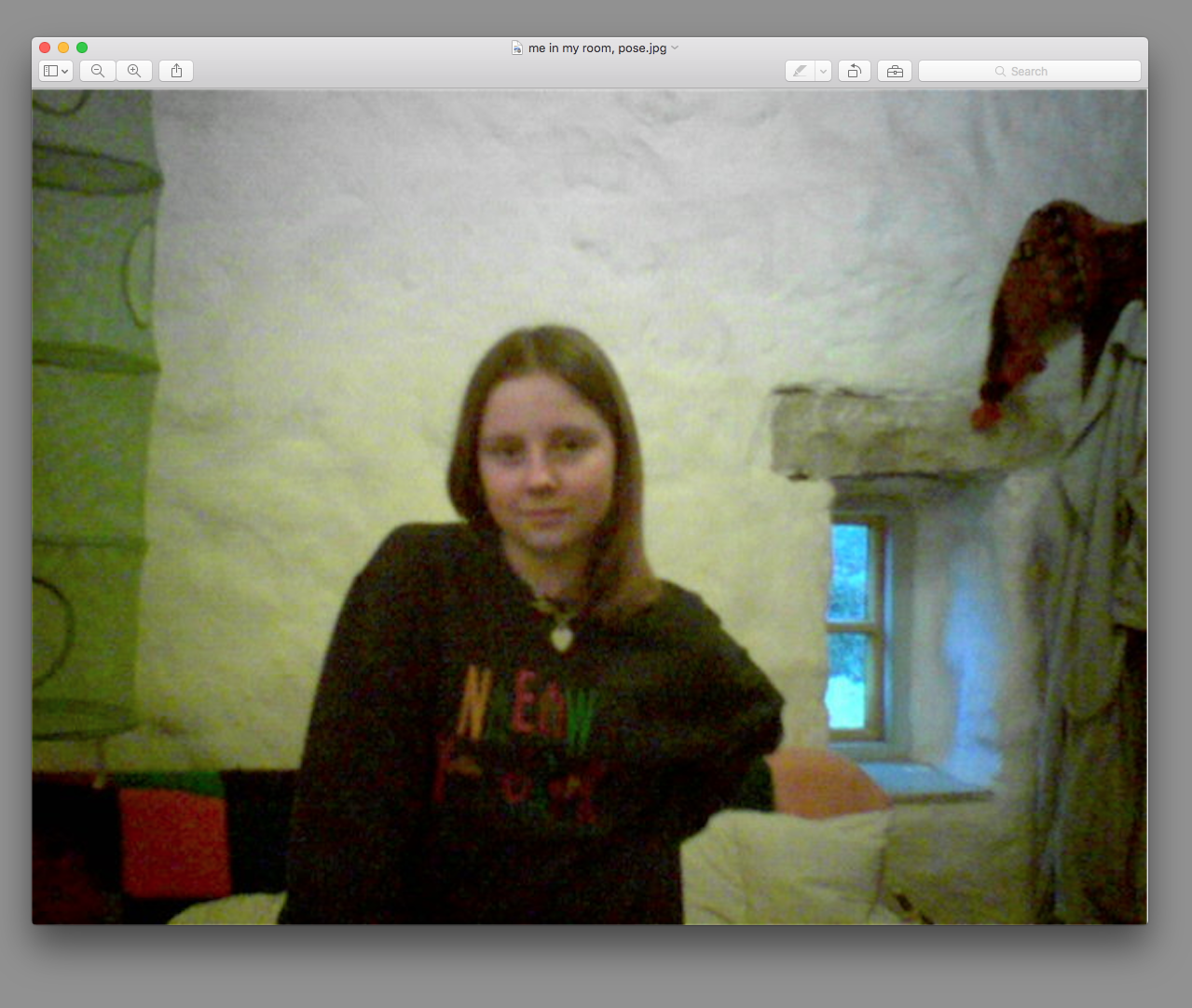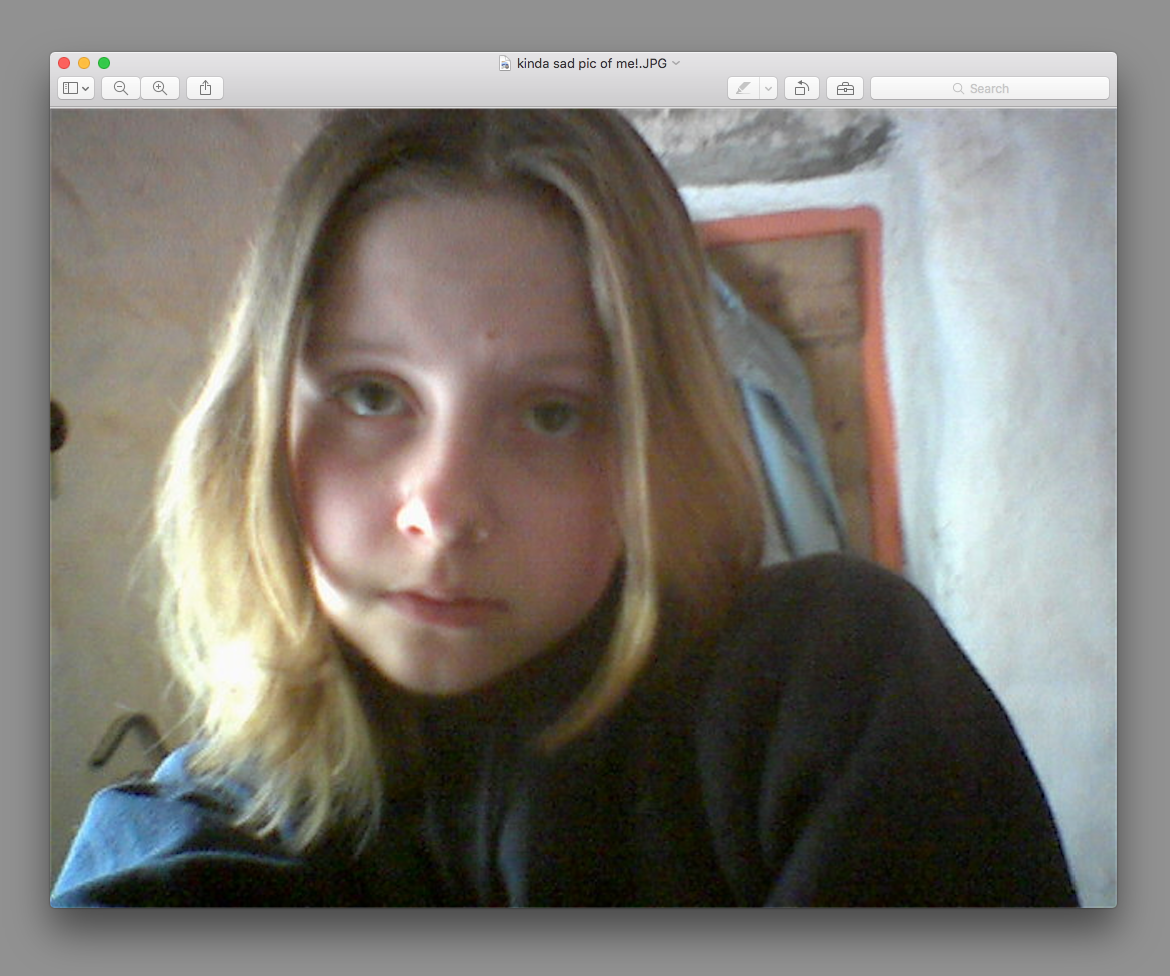Eva O'Leary
For Viewfinder
Being truthful with yourself.
11-year-old Eva
Imet Eva nearly three years ago when I wrote about her for Talk magazine. It was late spring in Brooklyn, when summer comes creeping in and by 9 a.m. the humidity level is 100-percent. I was uncomfortable and a little sweaty knocking on her studio door that afternoon. When she opened it, relief washed over me.
Part of this came from Eva’s work. Her portraiture is immediately familiar. That is to say, her subjects look the way an entire generation has imagined itself, on social media and in reality. I’m not sure there is a difference for Eva, or for the post-9/11 generation. Her photographs are a mirror reflecting the psyche of American youth in the twenty-first century. The images display all the uncertainty, bonding, prejudices, aspirations, and deep tenderness that are part of growing up in this country today.
And part of the relief I felt, the calm and collectedness, is Eva. She grew up next to Penn State and still shoots there—a Midwestern openness plays across her face in a way that is keenly observant and seemingly unbiased. It welcomes you in, and has allowed her to delve deep into the mythologies of her hometown, producing images devoid of nostalgia.
Relief is still something I feel when viewing Eva’s work. Relief that a woman is focusing her lens on women from a younger generation. Relief that she made it out of the academic institution with all the knowledge and none of the bias nor constraints that attach themselves to women navigating academia. Relief that she remains true to herself, year after year, project after project. And mostly, relief that Eva is strong enough to return home, to examine her past, to look, to listen and to learn from it. Something that, in this current moment, we all would be wise to do.
Director, Pacific Books
By Mo Mfinanga
December 21, 2019
Estimated 14 minute read
Transcribed from a phone conversation in late November.
Mo: Where are you right now?
Eva: A few months ago I moved back to my hometown to work on a project. I'm currently in State College, Pennsylvania living in a three-bedroom family home on frat row. It's kind of shocking, I was paying $200 more in NYC for a bedroom in an apartment with two roommates and half a studio. On the one hand, I'm alone in Central Pennsylvania but it's great because I can have a studio, a room to shoot in and my own bedroom for a lot less.
Mo: How is it compared to seeing your roommates every morning?
Eva: This house is unusually cheap, even for this area. But it was weird when I first moved in because I wasn't used to having space. I remember thinking "Holy shit, I can choose what room to drink my coffee in.” [both laughing] But now I've gotten used to it which makes me wonder what moving back to New York will feel like.
Mo: I'm assuming you've been given a lot of solitude now.
Eva: Last year I was commuting and splitting my time between Pennsylvania and NYC. In PA, I was living in a barn behind my childhood home, but my mom ended up moving into that space. I had to decide if I was going to put everything on pause for a while and go back to New York or sublet everything in New York and move out here. I chose to move out here. I spend a lot of time alone here, which can be strange because it's where I grew up. There's a lot of introspection.
Mo: What surprised you the most from the solitude?
Eva: Up until this point, my work, in a lot of ways—consciously or not—has always been rooted in what it was like to grow up in this culture. The project I started in grad school was called Happy Valley, which is a nickname given to my hometown. It was a way for me to examine feelings I had growing up and try to make sense of them. In retrospect, that's how I would describe the process. At the time it felt more intuitive, I felt I needed to make certain images. I knew they were coming from a personal place, but I didn’t know how to talk about my experiences yet, so the images came first.
Eva: For Spitting Image, I worked with 120 girls between 11-14. I photographed through a two-way mirror and made a portrait of each girl responding to their reflection. I wanted to work with girls growing up in the same place I did. Personally, I feel that growing up here had a specific sort of impact on my life and I wanted to see if that might be visible in them, too.
Spitting Image
(2017)
Eva: Those two projects were rooted in this place but indirectly. I think I was kind of afraid to look at my experiences straight on.
Mo: It seems like photography provides that protective layer.
Eva: Yeah, it's a way of picking apart anxieties I can't shake. And photography lets me obsess, but in a productive way. [laughing] There's a point to it. After Spitting Image, I wanted to start a new project so I started going back to PA regularly. I met a group of college students and started working with them. They made me realize I had to explore this place and my experiences because I couldn't continue to make work without doing that first. When I first moved back, I spent a lot of time reading old diaries. This town is quite small, even driving around brings back a lot of memories. Being back here is strange because some things haven't changed at all.
Mo: How have your ideas about your life and work progressed since being there?
Eva: I'm starting to understand why I keep getting pulled back here. That feels like progress. And I feel like I have more clarity about why I make certain pictures. I don't want to talk too much about the project I'm working on because I’m so close to it. I think it usually takes some time to find the right words to explain what’s driving something.
Mo: Giving yourself that space to figure out the driving force is paramount. You have to be focused which requires a sense of isolation, right?
Eva: Yeah, I'm also an introvert. I miss my friends in New York for sure, but I don't mind spending time alone. I like working with people, so the people I'm photographing and those interactions sustain me out here.
Mo: Right now I'm in a place where I've isolated myself to work on particular projects. So when there's a human interaction it's mostly because of work. I don't know if you have the same concern, but I worry about those worlds being too connected. It's nice when the work gives you an excuse to explore the thoughts you have about yourself, but sometimes those thoughts grow in a more healthy way when they're centered around being aware of your life without the work.
Eva: It's tricky. Being alone can be helpful but I think it's important to find a balance. I'm still trying to figure that out. I don't know if cell phones are a good replacement for a social life, [laughing] but I have a few group chats that are constantly active. I've had a few friends come out to visit too, and that's been really nice.
“When I’m watching videos on social media I question what the stakes are and who has the power. Where might it shift?”
Eva: Every so often I go back to New York and it's grounding. I can beat myself up easily, especially when I'm trying to make work. Sometimes it feels like I put my life on hold for this project. If I go too long without making pictures I start to question who I am and what I'm doing.
Mo: Whether as a photo editor or photographer, I think about how the internet and, in particular, how social media is a tool for research and sometimes is a process of the work. Right now I'm on a four week sabbatical from social media apps. It's way harder than one thinks to pull the plug on those things.
Eva: When I make an intentional effort to go offline, it always takes a few days to detox. You don't really think you're addicted until you try to take a break.
Mo: The illusion of relevancy scares me the most.
Eva: It's tricky. I do freelance work and social media helps. There's professional pressure plus social pressure plus escapism and addiction—it can be a lot. Sometimes it's helpful to say you're logging off because then you feel embarrassed if you fail and go back on too soon. You think, “Oh no, everyone knows I couldn't handle it!” [both laughing]
Photo from “Happy Valley”.
Mo: What recurring themes through social media have been translated into your work or process?
Eva: A lot of the work I make comes from stresses or anxieties I don’t fully understand. Before I started Spitting Image, my dad sent me a folder of selfies. He found them on an old laptop from when I was in eighth grade. At the time, I had gone back in after taking pictures of myself and re-named every file with a title to describe what I saw. They had filenames like, whoisthat?.jpg, Smile!.jpg, kinda sad pic of me!.jpg, SURPRISE.jpg, et cetera, et cetera.
Eva: I thought the titles were interesting because I was using photography to imagine how other people saw me. This was before cell phone cameras became a thing so I was using this James Bond spy camera. [laughing] But after this I started to think about how these kinds of impulses could translate into contemporary culture. I was thinking about teenagers’ access to screens and cameras and how that process is accelerated; how cell phone cameras are like mirrors and can be used to construct identities.
Eva: I’m curious how these kinds of experiences are translated through technology; how young people use cameras and cell phones to communicate what it’s like to be a teenager or young adult. As a photographer, you spend a lot of time picking apart images, and a lot of social media is extremely visual and centered around photography.
Mo: What further thoughts have been introduced since that examination?
Eva: With Spitting Image, I was working with girls between 11-14, and now I’m collaborating with young women in their late teens or early 20’s. I’ve been looking at a lot of social media and I think of that as research. I’m also interested in how sexism is filtered through technology.
Mo: Do you mind expanding on that?
Eva: I think a lot about power and sexuality and how power can change depending on the space and audience. For example, I was looking at videos of young women dancing on TikTok, and reading a lot of the comments below the videos.
Eva: There are a lot of trolls criticizing younger women, saying they are using their bodies for likes. It feels like an echo chamber and reminds me of the John Berger quote: “You painted a naked woman because you enjoyed looking at her, put a mirror in her hand and you called the painting 'Vanity'." I wonder if young women are dancing for themselves, or others, or both, and if it even matters. So on the one hand, there's sex-positivity, like owning your sexuality and body and being comfortable with it. I was trying to imagine how that would have changed things for my friends and I when we were younger.
Eva: My first thought was, “Wow, it would have been so great if we had these messages.” But also, I'm having a lot of conversations with young women in PA and it’s confusing—I feel like nothing seems to be changing in terms of sexual violence, for example. A lot of social and sexual dynamics are still really unhealthy and that doesn't seem to be changing even though the larger cultural conversation seems to have made a positive shift in the right direction.
Eva: I was working with a group of young women out here, photographing them as they got ready to go out to a party. I was taking pictures while they were hanging out in their personal space, putting on clothes, putting on makeup, et cetera. It felt really empowering, safe and positive. They were feeling supported by their friends, confident and in control. But I wondered if the empowering feelings last when they enter public space. I wonder where and when the power shifts. When I'm watching videos on social media I question what the stakes are and who has the power. Where might it shift? Is it purely empowering or are there social and emotional side effects or consequences? Or is it a combination of all of the above? It's pretty confusing and I don't pretend to know what the answers are.
Photo from “Happy Valley”.
Mo: What have you examined in the photo world?
Eva: That's tricky. [both laughing] I remember as an undergrad being embarrassed to like certain types of work, a lot of which was made by women. A lot of the language around photography seemed theoretical and detached. I understood that it was smart but I couldn't connect with it on a personal level. It seemed like there was only one way to talk about photography. Perhaps that came from my insecurities, but it made me feel like the way I was thinking about art was something to be fixed. [laughing]
Eva: I was making work about experiences I had growing up, and I remember an older male photographer telling me at one point that I should stop photographing women and girls. He warned me about being pigeonholed as one of, “Those types of artists.” It messed me up for a while because I was about to graduate. In my head, I was thinking, “He’s smart and knows what he’s talking about. He's probably right.”
Eva: If you’re making work about your life and told it isn’t valid, it really messes with your head.
Mo: Similar to what many people have gone through during their teenage years, the idea of performing again as an adult just keeps you in this noncontributory cycle.
Eva: At this point in my life I react strongly whenever I feel like I’m being forced to be someone I’m not. Maybe I overcompensate in the other direction; maybe that's why I'm out here.
“When I go out to make pictures I just tell myself to make the first bad picture. It gives me permission to fail and try things that might not work. ”
Photo from “Happy Valley”.
Mo: Where do you feel like you exist within your photography or the landscape of photography? Wait. [pauses] Maybe it's not a good thing to think about.
Eva: I don't think it is.
Mo: I guess that's the question: is it a good thing to think about? Do you feel like it's been contributive or detrimental to think about?
Eva: I think it’s detrimental.
Eva: I don't think it's good to worry about where you are within the landscape of photography, at least when you're in the middle of something. I feel like you need to be open to following whatever direction it takes you. I recently put all of the pictures I've been making together, it was reassuring because it felt like it was forming some sort of shape. But I could also see all the problems and holes. Now it's a kind of problem-solving, where you identify an issue in the work, obsess over it for a while, and ask yourself how you can figure it out. Saying, "This is where I exist in the photographic landscape so therefore these are my parameters,” potentially closes you off.
Mo: Having that notion might not make you challenge yourself. There needs to be some unfamiliar space within your work, I feel. That itself can get you excited about the work and maybe get other people to be excited. And sure, the work isn't about other people's opinion, but here's the funny thing: the idea of completely creating work for oneself is often applauded but that's 90-percent true. If it was a 100-percent true then no one would ever share their photographs.
Eva: It's funny, though. I recently realized I've spent almost two years at this point traveling out here and making pictures I haven't really shown anyone. Two weeks ago I was hit with the realization that I'm probably going to have to show them to someone at some point. [both laughing] When I go out to make pictures I just tell myself to make the first bad picture. It gives me permission to fail and try things that might not work. After you make one picture the next is easier. I don’t want to be thinking about how other people might judge my impulses or ideas while I'm trying to make something.
“If you’re feeling something deeply, there’s a huge chance that there are a lot of other people feeling the same thing who aren’t necessarily able to express it. ”
Eva: There's an artist I've grown up around, named Brent Green, who makes really amazing videos. He once said, “The main thing art needs to have is urgency and wonder,” which I've found to be something that rings true.
Eva: Brent also said, “For something to be great, it has to be something that could either fail magnificently or succeed magnificently.” There's no in-between, really. I think worrying too much about what other people think while you’re making something doesn’t give you much room to potentially fail.
Mo: I feel like vulnerability is a heavy factor in that.
Eva: Yeah, if you're too self-conscious too soon, the fear of being judged becomes yet another reason not to make something.
Mo: What has been the biggest responsibility you've given yourself in either your work, your life, or both?
Eva: I guess it's connected to this idea of lying to yourself. I don't know if this is my biggest responsibility, but when I was younger I had this belief that when I'm making work, I'm moving towards the hardest or most painful feeling I can grapple with.
Eva: I wrote in one of my journals when I was a lot younger, “Rationalization is lying to yourself.” I was thinking about vulnerability, and the impulse to lie to yourself to avoid difficult ideas or emotions. It’s also connected to the belief that if you're feeling something deeply, there's a huge chance that a lot of other people are feeling the same thing who aren't necessarily able to express it.
Eva: I think that whenever I sense myself shying away from trying to express something that feels vulnerable and honest, it’s my responsibility not to look away from that place. 〄
Discover More
- Viewfinder
Conversations that explore the risks, ideas, and experiences of ones practice.
- DIGITAL DISCOURCE
Live chats between artists that share thoughts related to their practice.













